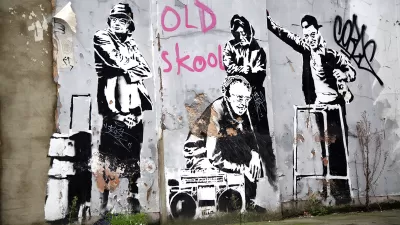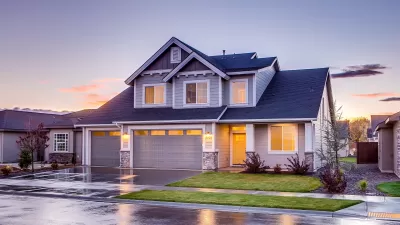Two articles look at millennials, cities, and the future. "Peak Millennial" refers to the numbers of millennials moving to and from cities. Grist's Ben Adler looks at why urban millennials are moving to suburbs, and what can be done to address it.

"Peak Millennial," described here last month, was coined by demographer and urban planner, Dowell Myers, Ph.D. of the University of Southern California. Natalie Delgadillo, editorial fellow at CityLab, writes that according to Myers, "from now on, there will be fewer young people moving into cities, because there will simply be fewer of them period...Additionally, as the largest group of Millennials grows older, many of them will begin to make the shift into suburban family life."
Ben Adler, who writes about climate change, energy, and cities for Grist, focuses on that last part—the urban out-migration of millennials, particularly for those starting families, to the suburbs.
"While it is a statistical fact that more Americans are still moving to the suburbs than to inner cities, it is a mistake to assume that means they all want to do so," writes Adler.
You've probably heard the narrative, backed up by census data: as millennials get older, they start families, and move to the suburbs in search of larger homes (and presumably the back yards), better schools, safer neighborhoods.
The truth is more complicated. Where people end up living is not necessarily where they want to live. If you look more closely, you will see that we’re pushing many people who would prefer walkable urbanism out to the suburbs against their will.
After all, he writes, "[i]f you ask young parents why they have left a star city for its suburbs, or for a cheaper Sun Belt region, you won’t hear most of them say 'because I wanted to shop at strip malls and big box stores' or 'because I love driving everywhere.'"
The other group Adler looks at are baby boomers, many of whom are returning, or hoping to return, to cities as empty nesters. Ironically, that could accelerate the millennial out-migration if cities don't build more housing to accommodate both generational groups.
"Ultimately, all cities should be trying to figure out how they can expand their housing supply, improve their schools, build up their transit systems, and develop other infrastructure to accommodate everyone — the young, the old, and even the middle-aged with families — who wants to live there," concludes Adler.
FULL STORY: Just because some millennials are moving to the ‘burbs doesn’t mean they like it

Pennsylvania Mall Conversion Bill Passes House
If passed, the bill would promote the adaptive reuse of defunct commercial buildings.

Planning for Accessibility: Proximity is More Important than Mobility
Accessibility-based planning minimizes the distance that people must travel to reach desired services and activities. Measured this way, increased density can provide more total benefits than increased speeds.

World's Largest Wildlife Overpass In the Works in Los Angeles County
Caltrans will soon close half of the 101 Freeway in order to continue construction of the Wallis Annenberg Wildlife Crossing near Agoura Hills in Los Angeles County.

How Transit Architecture Impacts Real and Perceived Safety
More than a third of Americans believe major transit systems are too unsafe to ride. The built environment can change that.

New York Passes Housing Package Focused on New Development and Adaptive Reuse
The FY 2025 budget includes a new tax incentive, funding for affordable housing on state land, and support for adaptive reuse and ADUs.

LA Metro Board Approves New 710 Freeway Plan
The newest plan for the 710 corridor claims it will not displace any residents.
City of Costa Mesa
Licking County
Barrett Planning Group LLC
HUD's Office of Policy Development and Research
Mpact Transit + Community
HUD's Office of Policy Development and Research
Tufts University, Department of Urban and Environmental Policy & Planning
City of Universal City TX
ULI Northwest Arkansas
Urban Design for Planners 1: Software Tools
This six-course series explores essential urban design concepts using open source software and equips planners with the tools they need to participate fully in the urban design process.
Planning for Universal Design
Learn the tools for implementing Universal Design in planning regulations.


























